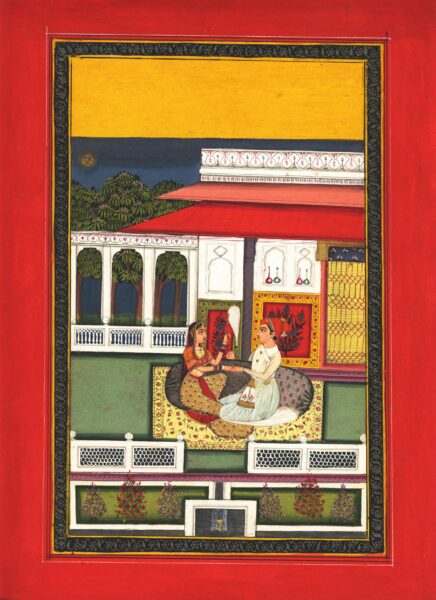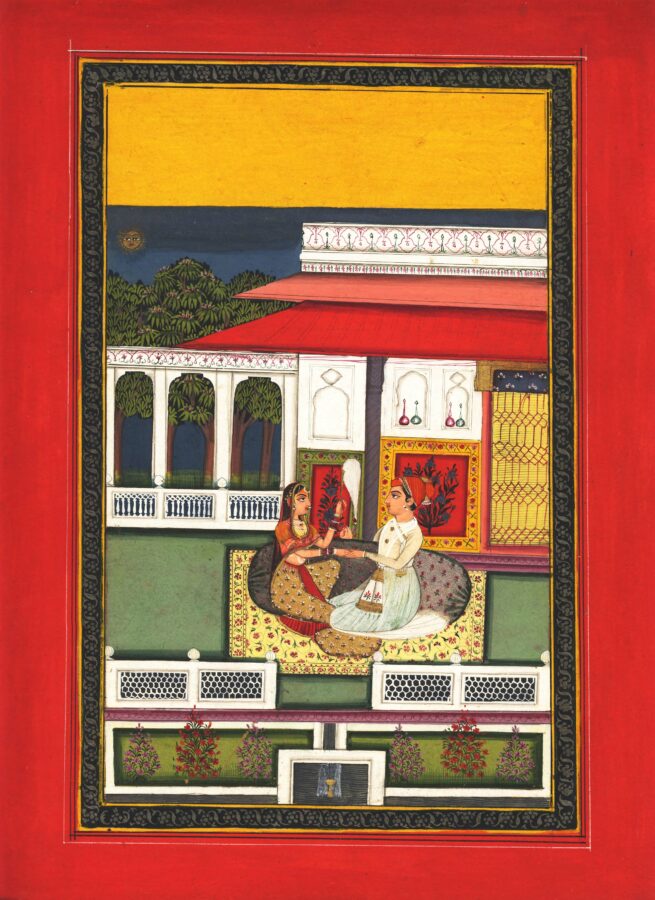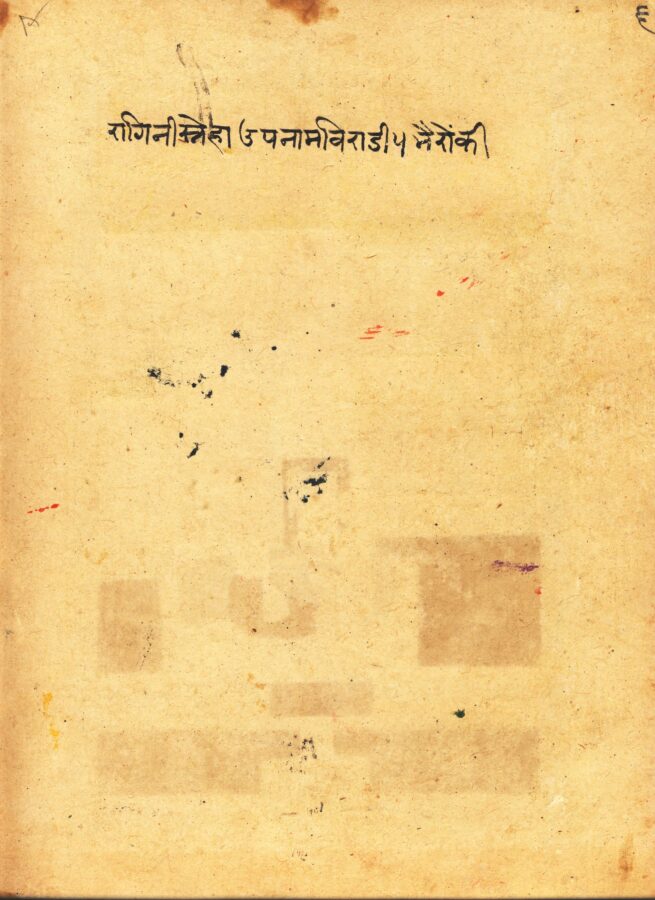This fine miniature painting shows a couple seated on a carpet with a large cushion beneath a palace pavilion.
The painting is inscribed in Sanskrit in Devanagari script at verso: ‘Ragni Sneha upnaam Viradi 5 Bhairo ki’ (this translates as ‘Ragni Sinha wife of Raag Bhairav‘).
The raag-mala – garland of ragas – is a series of visual representations that depict a range of musical melodies known as ragas. They stand as a generous example of the amalgamation of art, poetry and classical music. Poetically, some might also refer to them as colours which fill the mind with specific feelings, passions, or emotions. There are seasons, and the time of day and night, during which a particular raag is to be sung.
Raag mala were first depicted during 15th century but mostly flourished in the Pahadi, Rajasthani, Deccan and Mughal schools during the 16th century. Each region and area had its own ways of depicting the raag-mala series. There are six male raags who have 30 wives (sometimes 36) known as raginis, and each pair bears 8 sons, so 48 in total.
Ragamala paintings draw from aspects of human experience in order to visualise specific moods, emotions, and qualities such as love, anguish, valour, weakness, and strength. A raga in Indian music is a melody that consists of a string of notes in a particular arrangement. Raginis are derivations from or variations of ragas in feminine mode. Specific ragas are associated with particular times of the day, seasons, and emotions. When visualized, as here, ragas and raginis are meant to evoke the same effective responses that are allied to their musical modes.
The painting here is in fine condition with no evidence of overpainting.
References
Topsfield, A., Indian Paintings from Oxford Collections, University of Oxford, 1994.




